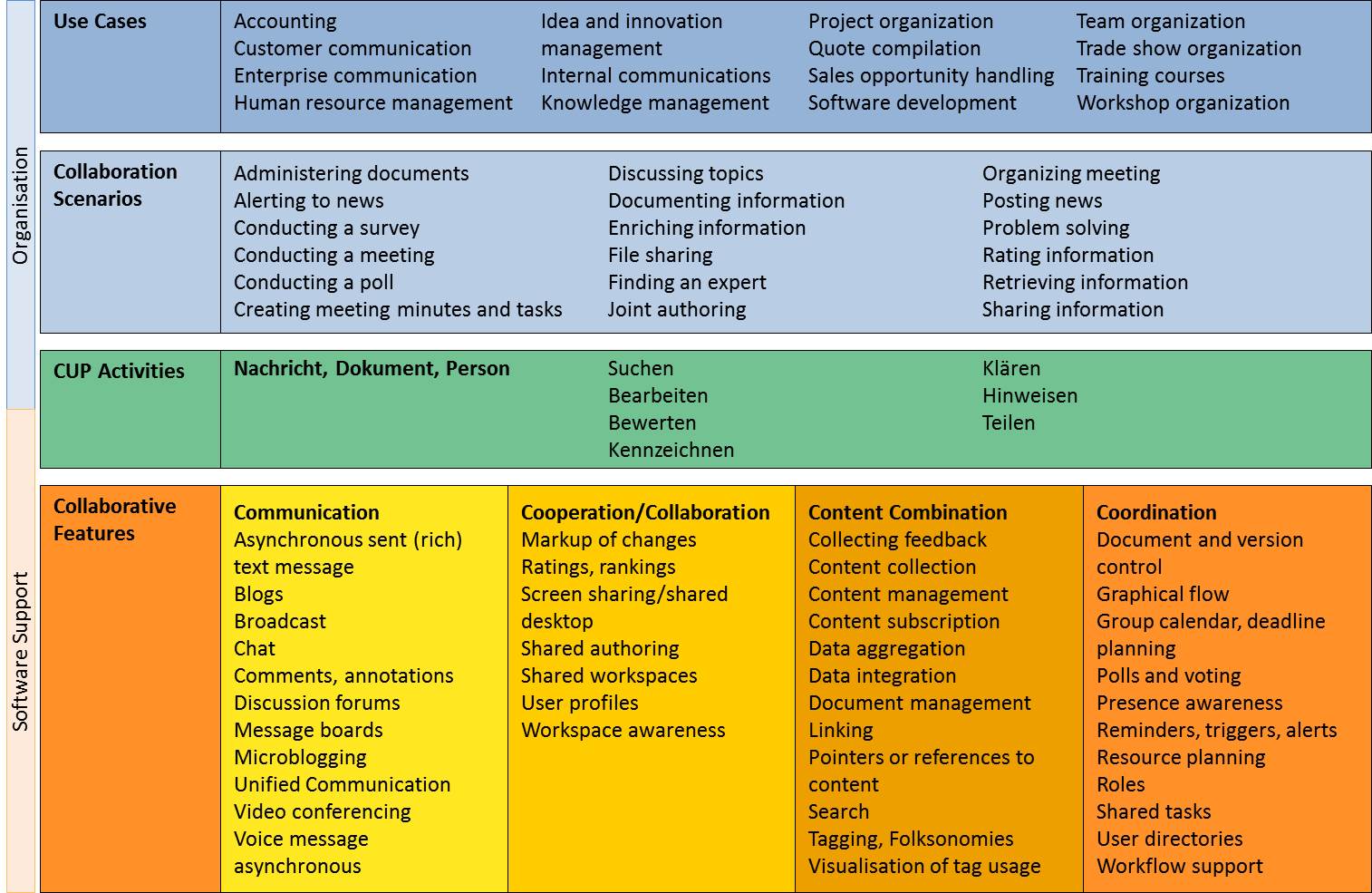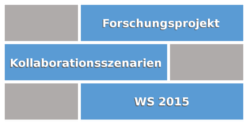During the research project the IRESS model was changed and an extension was added. The use cases and collaboration scenarios originally coded by Schubert and glitch (2015) were used to categorize a larger amount of case studies of E2.0. Missing use cases and collaboration scenarios were to included and changed accordingly. Software components have been removed and the research group added the CUP Activities from the aperto framework. Software components tend to bundle several collaborative features and thereby complicate the analysis of the collaboration scenario. Software suites illustrate that problem very accurately because it is hard to tell which collaborative feature is actually used and needed by the company.
The CUP Activities represent the link between organisation and software support. During the research project the investigation of the activities in a collaboration szenario proved to be helpful in order to gain a deeper understanding of collaboration scenarios by showing the actual use of a collaborative feature. It became clear that the nature of the object (message, document, person) in the focus of the collaboration scenario is important in order to complete a task and the collaborative feature used will differ depending on what kind of activity and object is needed.

IRESS Extended
References
Richter, A. et al., 2012. aperto – Ein Rahmenwerk zur Auswahl, Einführung und Optimierung von Corporate Social Software M. Koch & F. Ott, eds., München: Forschungsgruppe Kooperationssysteme, Universität der Bundeswehr München
Schubert, P. & Glitsch, J.H., 2015. Adding Structure to Enterprise Collaboration Systems: Identification of Use Cases and Collaboration Scenarios. Procedia Computer Science, 64, pp.161–169
Williams, S.P., 2011. Das 8C-Modell für kollaborative Technologien. In M. Koch & P. Schubert, eds. Wettbewerbsfaktor Business Software. München: Hanser, pp. 11–21


